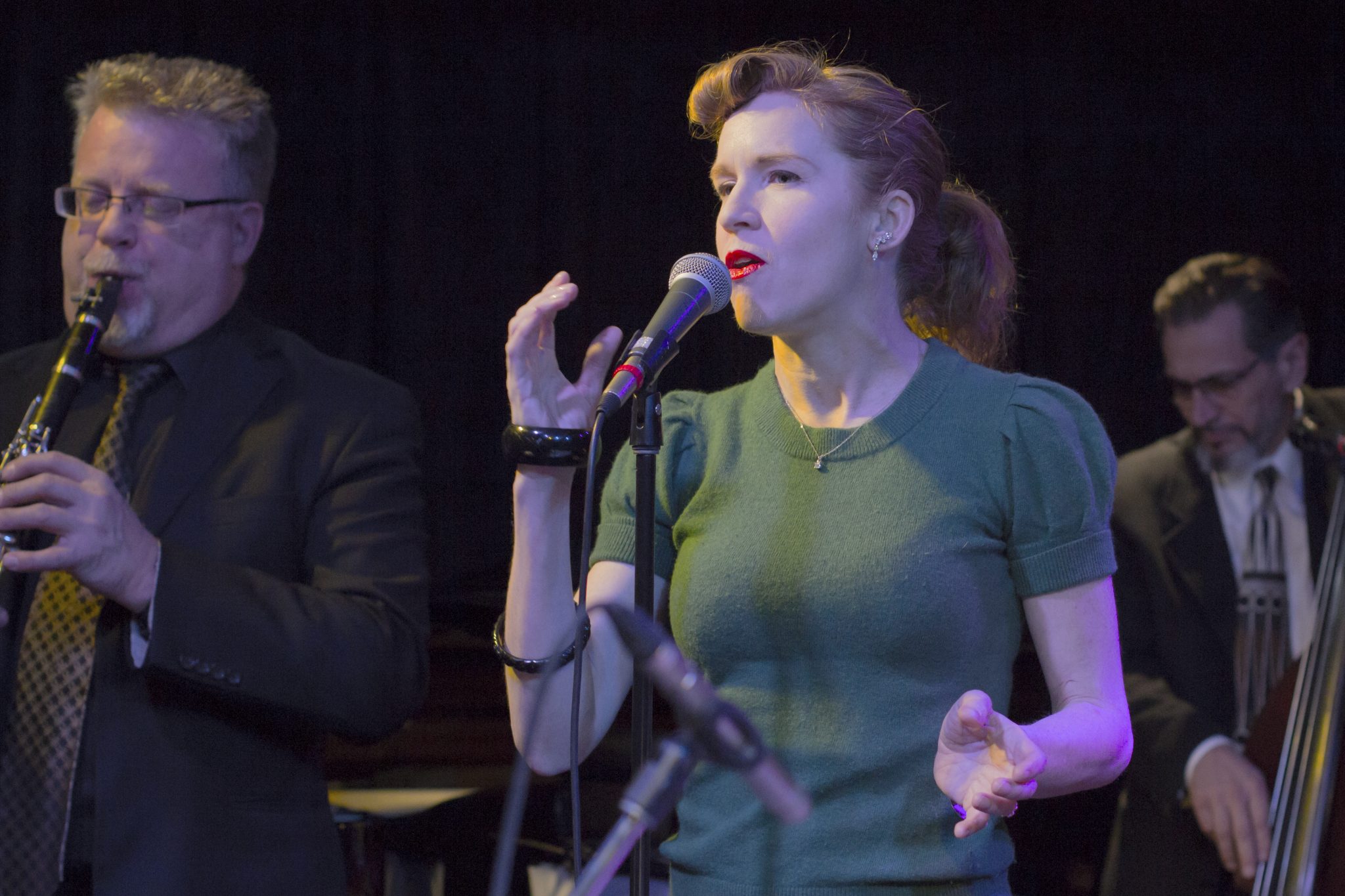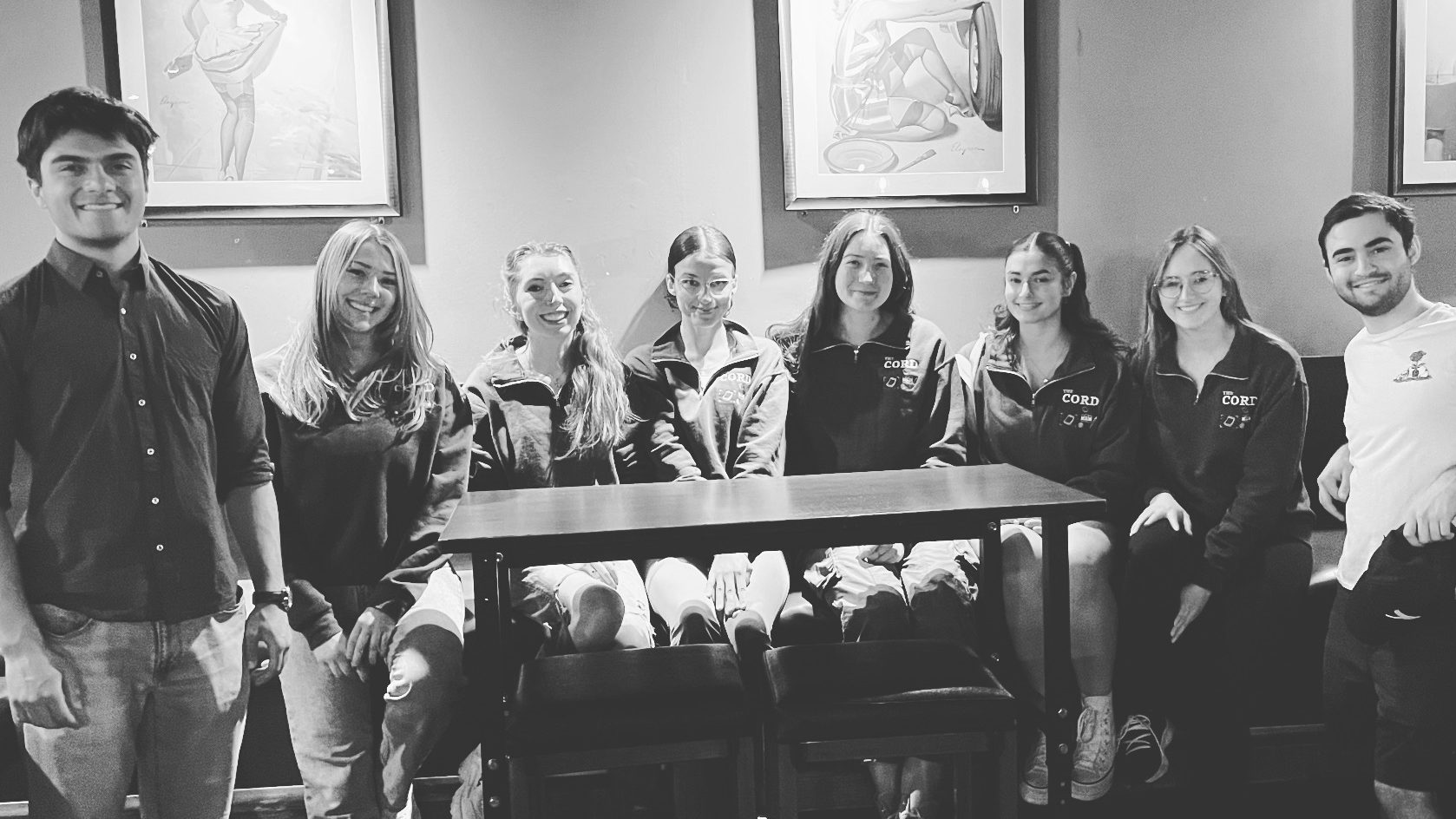
On Feb. 3, Juno nominee Alex Pangman performed at the Jazz Room in the Huether Hotel alongside the Benny Goodman Quartet.
Admittedly, jazz isn’t something I’m interested in or something that I “get”.
At seemingly random and innocuous points the audience would get really “jazzed” and start clapping over a particular string of notes. Maybe you need to be musically educated to truly understand the nuances of its form.
Whatever the case, I found myself awkwardly cheering alongside the audience members as they respectfully and excitedly whispered about the saxophone player.
Truthfully, the only time I could confidently clap and cheer was when Pangman came up to sing. Pangman has been dubbed the “Canadian Sweetheart of Swing” and undoubtedly the most passionate jazz-aficionado I’ve ever met.
“There’s a song for everybody,” Pangman explained her love for the music.
“If you’re happy or sad. If you want to get high, if you want to meet somebody or have sex … Jazz is music for everyone, it’s music of the humanities.”
“If you go into a studio these days there’s so many knobs and tubes, like smoke and mirrors that you can employ to alter and enhance the way a song sounds. Sometimes all that studio trickery takes away from the energy and the honesty of a track.”
While Pangman is 100 years too late to really be in the heart of jazz, through her beautiful voice and passion for the music she reminds us what we’ve been missing out on
“There’s just something more to jazz, it’s so giving … I wanted something that was pure, honest, simple and organic. That’s what jazz is to me.”
Pangman has five albums and one EP named “Alex Pangman’s Hot Three”. While her albums are great, it’s the EP we have to talk about.
Because Pangman is so dedicated the authenticity found in jazz music that she even recorded her EP in a similar style to the 1920’s.
“If you go into a studio these days there’s so many knobs and tubes, like smoke and mirrors that you can employ to alter and enhance the way a song sounds. Sometimes all that studio trickery takes away from the energy and the honesty of a track.”
“What I did is, I took away all of that. I used one single microphone and we made a record. We actually cut the groove in the same room that the band was standing. There was no editing — for all intents and purposes we were live recording.”
Recording in this style meant that Pangman and the band had to preform it perfectly in one go. The room for error was minimal, and if something happened — like say somebody sneezed halfway through a song — they would have to start all over again. And then wouldn’t you feel like the asshole if it was you that sneezed?
“We really tried to recreate the conditions under-which people first began making recordings. Some of those early recordings from the 20’s and 30’s had a wonderful energy to them. This was our attempt to catch that energy.”
Even just sampling “Hot Three”, it’s easy to tell that the EP is amazing. I don’t want to be dramatic but it’s probably the most captivating work I’ve heard this year.
“In high school it was Paula Abdul and boy bands on the radio. Anything that had been concocted by a committee behind closed doors and was all pre-fabricated,” Pangman said.
“When you’re talking about listening to, say a record by Billie Holiday that was recorded in the 1930’s, it’s not fabricated. It’s just honest, there’s a depth to the lyrics, there’s a depth to the melody playing.”








Leave a Reply
You must be logged in to post a comment.